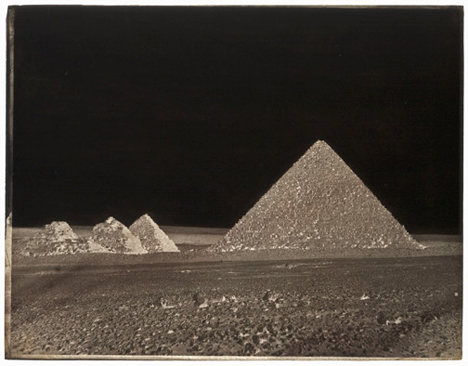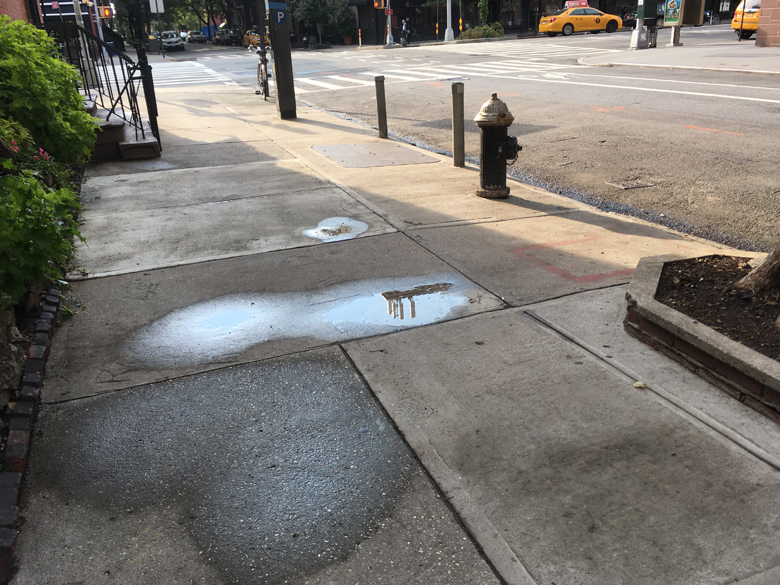CLIV
Body-shamming
What to wear to the Ghost-Modernity ball?
An Edmund Burke-ini?
With or without hareemcamopantaloones?
A Locke-ini?
Hobbes-kini?
Roussau-maillot?
PlatoSpeedo?
Singlet?
Doublet?
Translet?
Ah Bartleby, ah Burke and Hare (from whom the euphemism burking comes)
And what is the relation between La Jeune Tarentine, drowned and washed up in eroto-aesthetic perpetuity in the Musée d’Orsay, and those others in their thousands, not marble, bound for Europe across the wine dark Aegean?
Don’t ask me, I’m just a burking stiff
She was afraid to come out of the water…
How to stuff a wild…
Dis generation don’t know right from thong
Little man, the big picture was never your long suit
It’s raining cats and gods
Let dog equal dog
Someone, round the corner of the late 18th century, pulled a lever and shunted the canal boat of atmosphere onto the iron rails of narrative. Clouds to coal, clouds to coal: concretion mon amour. And dust.
Grooves of change grooves of change…
And a 21st century West, restive, yet asleep at the switch…
An object at West tends to wemain at West
Profit-based systems, for all their vaunted incentivizing of innovation, lose efficacy because they put a barrier between a society’s generative capabilities and the provision of actual human needs. The way such a system disrupts the dao is that it inserts an abstraction, in this case profit, between two elements of an otherwise symbiotic exchange, thereby disrupting innately reciprocal flows of energy and destabilizing the organic balance among production, distribution and consumption. It is as though the heart had to “pay” the lungs before the latter would oxygenate the blood, or leaves had to remunerate branches for the delivery of nutrients. (“Where’s my cut?” complains the bark. And the fruit threatens: “I ain’t droppin’ till you take care of me.”)
What we’ve come to call capitalism, then, is not merely alienating (in even an expanded Marxist sense), it constitutes alienation itself: manifestation, symptom, and amplifying agent all in one.
And if perhaps a hundred years
From now an airship with Greek wine
High-laden through the red dawn steers –
Who would not be the ferryman?
Asked Gottfried Keller oncet
It is well known that Martin Luther was a mass media guy, that he seized upon the printed image and word and, through insightful opportunism dominated the propaganda game in his war against the established church. In short, Luther created a communication and distribution mechanism that had his “public” eagerly asking of one another: What’s the word from Wittenberg?
What is less known is that he was a champion of disinformation and psy-ops. In the early 1550s, when one of his chief antagonists, Cardinal Albrecht of Brandenburg (who had amassed a vast collection of holy relics), was forced to relocate from Reformation Halle to Catholic Mainz, Luther anonymously circulated a pamphlet falsely attributed to Albrecht and inviting one and all to his new pilgrimage center. There, one would view – and presumably be blessed in the presence of – some truly spectacular relics, viz.: “a nice piece of Moses’s left horn, three flames from the burning bush, three tongues of fire and one egg of the Holy Spirit, one tip from the banner brought back from Hell by Christ, a big curl from the beard of Beelzebub, a feather from the archangel Gabriel’s wing, a full pound of the wind that blew past Elija on Mount Horeb…”
It is hard, in a time where damnation is rarely constructed as a literal thing, to imagine the power of the concept, or the desperation of those who would, if they, could, pay for indulgences to mitigate the torments of Purgatory and the eons of punishment one would otherwise have to endure there. Thus, by making a pilgrimage to a relic site and negotiating a donation, one could obtain some remission. The more relic-saturated the center, the greater the number of indulgences that would accrue to the pilgrim who could pay to see them all. Albrecht’s collection in Halle, for example, contained 8,133 relics that could potentially confer indulgences amounting to 39,245,120 years, 220 days, and 6,540,00 Quadragenes [a synonym for the forty days of Lent] of penance.
I have not yet encountered a text that explains who had the authority to evaluate relics and assign them an indulgence value. Or, for that matter, if there existed a standard or set of standards by which the indulgence value of a given relic was calculated. How many coils of St. Erasmus’s intestine, for example, would it take to equal one of St. Lucy’s eyes?
A feather, as it were, of Gabriel’s wing…
But do angels molt, or be they pluckt?
Pandora: “all gifts,” all the time
I was a Plus-sized Model for the FBI
Feign madness, but keep your balance…
A profit margin is not the same as a marginal prophet
And he said, Verily I say unto you, No prophet is accepted in his own country. [Luke 4:24]
Yehuda Naamad, 30, who works in a spice shop, moved to Mitzpe Danny [a Jewish settlement in the West Bank] from Jerusalem two years ago “for the space,” he said. This month, he moved again, to another trailer home in the settlement of Hemdat in the Jordan Valley…
“I believe this is our land,” he said of the West Bank, adding, “God brought us back. God writes our history.” [Isabel Kirshner, “Israel Quietly Legalizes Pirate Outposts in the West Bank,” New York Times (online). August 31, 2016]
Wondrously direct Mr. Naamad’s language. Unlike that of the Times, which uses interesting words like “pirate.” And the lede: “Unauthorized settlements dot hilltops in the West Bank, and anti-settlement groups and Palestinians say retroactively legalizing them is a methodical effort to change the region’s map.” Dot. Hey, a dot’s no big thing. Unless it’s on your lung. But “methodical effort to change the region’s map,” now that’s saying something. But by saying something one can deftly avoid saying a more important something else, which is: If you’re a Palestinian living in the West Bank, you’re probably not thinking much about maps, changing or otherwise. More likely, with each new trailer you see, and each new paved road leading to it along with the IDF soldiers guarding it, not to mention the armed-to-the-teeth settlers, dot by dot your land is disappearing out from under you, making the very idea of a Palestinian “state” – mirroring that of Jewish Israel – an evermore threadbare and ridiculous fantasy. There is, after all, a relation between hope and hoax.
And then, in this context, another way of saying “methodical effort” is simply: “strategy.” But that emphasizes the thought behind the action, and raises the question of whose strategy, which, once answered, would reveal in unambiguous clarity their true intentions and ultimate aim.
God dots the “i” on every history He writes. But He leaves crossing the “t”s to his son.
And ‘tis truth, sad or otherwise, that wherever on the globe we abide or migrate to or from, we find ourselves in Magna Graecia: a web of thought diffused, as through by rhizome action, across space and time.
Sing, Goddess…
Karaoke: muse of full-throated amateurs
Lypsinkia: protectress of faint-hearted balladeers…
Podcastia: half-Olympian, half-mortal daughter of…
The Syracusan Bride Leading Wild Beasts in Procession to the Temple of Diana
Whilst Aphrodite:
There clad herself in garments beautiful
The laughter-loving goddess. Gold-adorned
She hastened on her way down Ida’s mount,
Ida, the many-rilled, mother of wild-beasts;
And in her train, the grey wolf and the bear
The keen-eyed lion and swift-footed pard,
That hungers for the Hind, all fawning came…
Writ someone Homeric, oncet
Lion + Pard = Leopard, muthotically, if not genetically
A muthodical attempt to change the region’s map
The extensive highland surveys of recent decades have collected data on the nature of human occupation in this region [Canaan] over many millennia…
We now know that the first occupation of the highlands took place in the early Bronze Age, beginning over two thousand years before the rise of early Israel, in around 3500 BCE… More than a thousand years later, around 2200 BCE, most of the highland settlements were abandoned and the highlands became a frontier area again. Yet a second wave of settlement, stronger than the first, began to gain momentum in the Middle Bronze Age, shortly after 2000 BCE. This wave began with the establishment of small, scattered villages that gradually grew into a complex of 220 settlements, ranging from villages to towns to fortified regional centers.
Many of the major, fortified centers of this period – Hebron, Jerusalem, Bethel, Shiloh, and Shechem – would become important centers at the time of the Israelites. Yet the second wave of highland settlement came to and end sometime in the sixteenth century BCE. At this time, the highlands would remain a sparsely populated frontier zone for four centuries.
Finally – as a third major wave – the early Israelite settlement began around 1200 BCE. Like its predecessors, it commenced with mainly small, rural communities with an initial population of approximately 45,000 in 250 sites. It gradually developed into a mature system with large cities, medium-sized regional market centers, and small villages. Bu the high point of this settlement wave in the eighth century BCE, after the establishment of the kingdoms of Judah and Israel, it encompassed over five hundred sites, with a population of about 160,000.
This dramatic population growth was made possible by the full utilization of the region’s agricultural potential. The highlands offer excellent terrain for olive and vine growing – the most profitable sectors of the traditional Middle Eastern economy. In all three periods of extensive highland settlement, surplus wine and olive oil seems to have been sent to the lowlands and even exported beyond the borders of Canaan, especially to Egypt. [Israel Finkelstein and Neil Asher Silberstein, The Bible Unearthed: Archaeology’s New Vision of Ancient Israel and the Origin of Its Sacred Texts. New York: Touchstone (Simon & Schuster), 2001. pp. 113-115.]
God writes our history…


